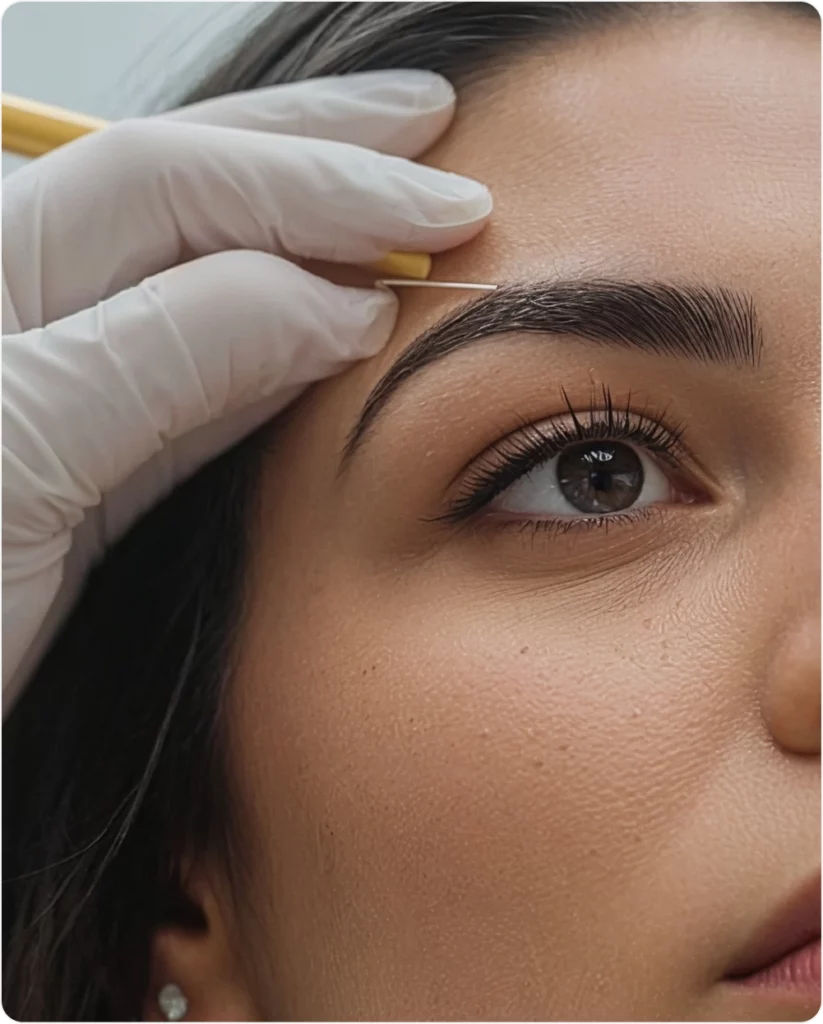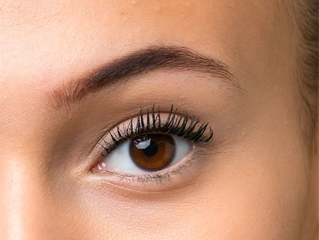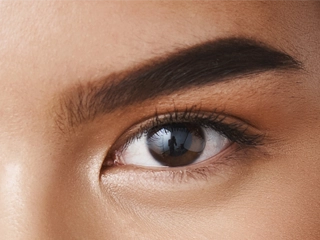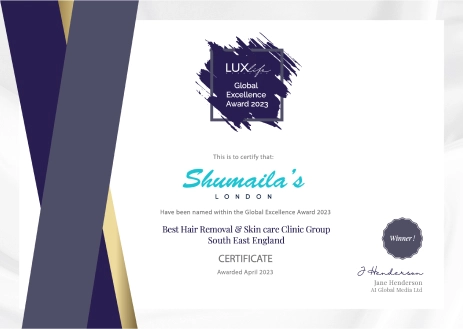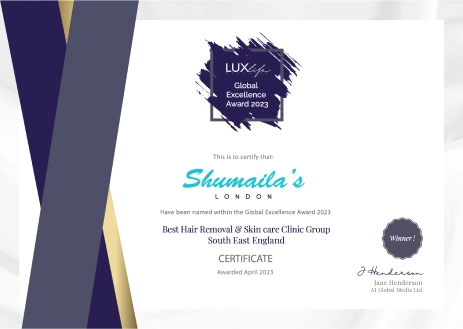Look. Feel. Live. Better
Successful Hair Transplants
10,000+
Happy Customer Reviews
400+
Certified & Experienced Doctors

Researching for a clinic?
Safe and Surgically Proven
FUE eyebrow transplant is a minimally invasive, doctor-led procedure performed under local anaesthetic.
At Shumaila’s London, all procedures are delivered by GMC-registered doctors using advanced FUE tools and protocols.
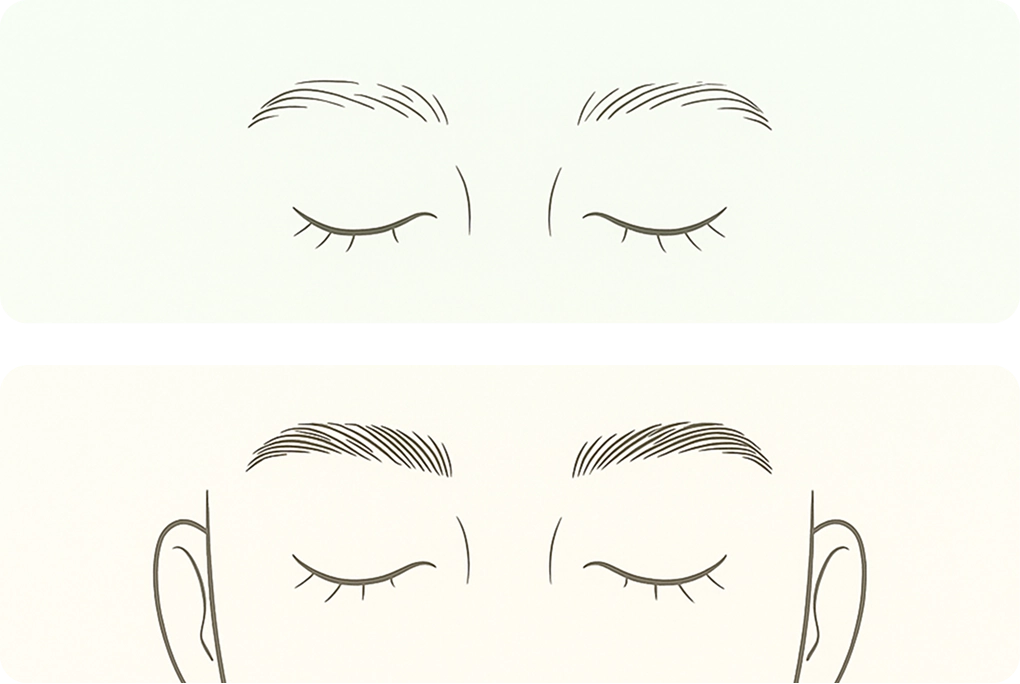
It’s safe because
And effective, due to
With results in…
Day 0–2 (Procedure & immediate recovery)
Brows look fuller with tiny pinpoint scabs and mild redness/tenderness; this is expected after local anaesthetic and graft placement. Keep the area dry, avoid touching, and sleep on your back with slight elevation while the skin settles.
Days 3–7 (Early healing)
Scabs naturally darken and flake away as the redness fades, leaving the brows looking tidy but a little “dotty” in places. Cleanse exactly as advised and avoid heat, sweating and makeup on the area while the skin finishes closing.
Week 2 (Settling phase)
Most scabs have lifted and the skin tone evens out, though some transplanted hairs may shed with the last flakes. This is normal — the follicles remain in place beneath the skin and are entering a new growth cycle.
Weeks 3–4 (Shedding period)
A noticeable shed often occurs now, so brows can look patchier than before; it’s part of the reset known as shock loss. Resist tweezing or picking and keep skincare simple while the follicles prepare to push new hairs.
Month 2 (Quiet phase)
Visual change is minimal and the brows may appear close to your starting point, but under the surface the follicles are establishing a stronger blood supply. Most day-to-day routines are fine; continue to avoid harsh treatments on the brow line.
Months 3–4 (Early new growth)
Fine, wispy new hairs begin to emerge and fill small gaps, sometimes with mild itch or the odd tiny ingrown as they break through. Keep the area calm and let us advise if you notice any irritation.
Months 4–6 (Building density)
Growth becomes more noticeable and the overall shape starts to look intentional, with direction improving as the skin softens around each graft. Light trimming of longer strands is usually all that’s needed for neatness.
Months 6–9 (Major cosmetic improvement)
Brows look fuller and more defined with better tail and arch balance, and hair texture is closer to your natural brows. You can usually reintroduce gentle tinting and subtle shaping once we’ve given the go-ahead.
Months 9–12 (The big reveal)
Density and coverage are strong, direction is more uniform and any residual pinkness has settled, delivering a convincing, natural result. Expect an occasional tidy-up trim as transplanted hairs can grow slightly longer.
Months 12–18 (Maturation & final result)
Brows fully mature with stable thickness, sheen and direction, giving a long-term, effortless look. If you’d like extra fullness or a small shape refinement, this is the earliest sensible window to discuss a touch-up.
Excellent 4.9 out of 5
Experts Guaranteed
Shumaila’s world class team of doctors span from the UK to Eruope

Clinics
10+
Experts
10+
Experience
35+ years
Ready to start?
Watch our video
Frequent Asked Questions
Pricing depends on graft count and desired density. Partial restoration typically uses ~200–250 grafts per eyebrow, with full reconstruction ~300–400+ per eyebrow. We’ll confirm the plan and a fixed quote at consultation. 0% finance available (subject to status).
Results are permanent. Some hairs shed at ~1 month (normal). New growth usually begins 3–6 months, with major improvement by 9–12 months and final maturity at 12–18 months.
Yes, when performed by GMC-registered doctors with FUE. Expect mild swelling/redness and tiny scabs for 1–2 weeks; most clients resume normal routines within a few days.
People with over-plucked brows, thinning with age, scarring/trauma, or certain medical causes — provided there’s suitable donor hair and expectations are realistic.
